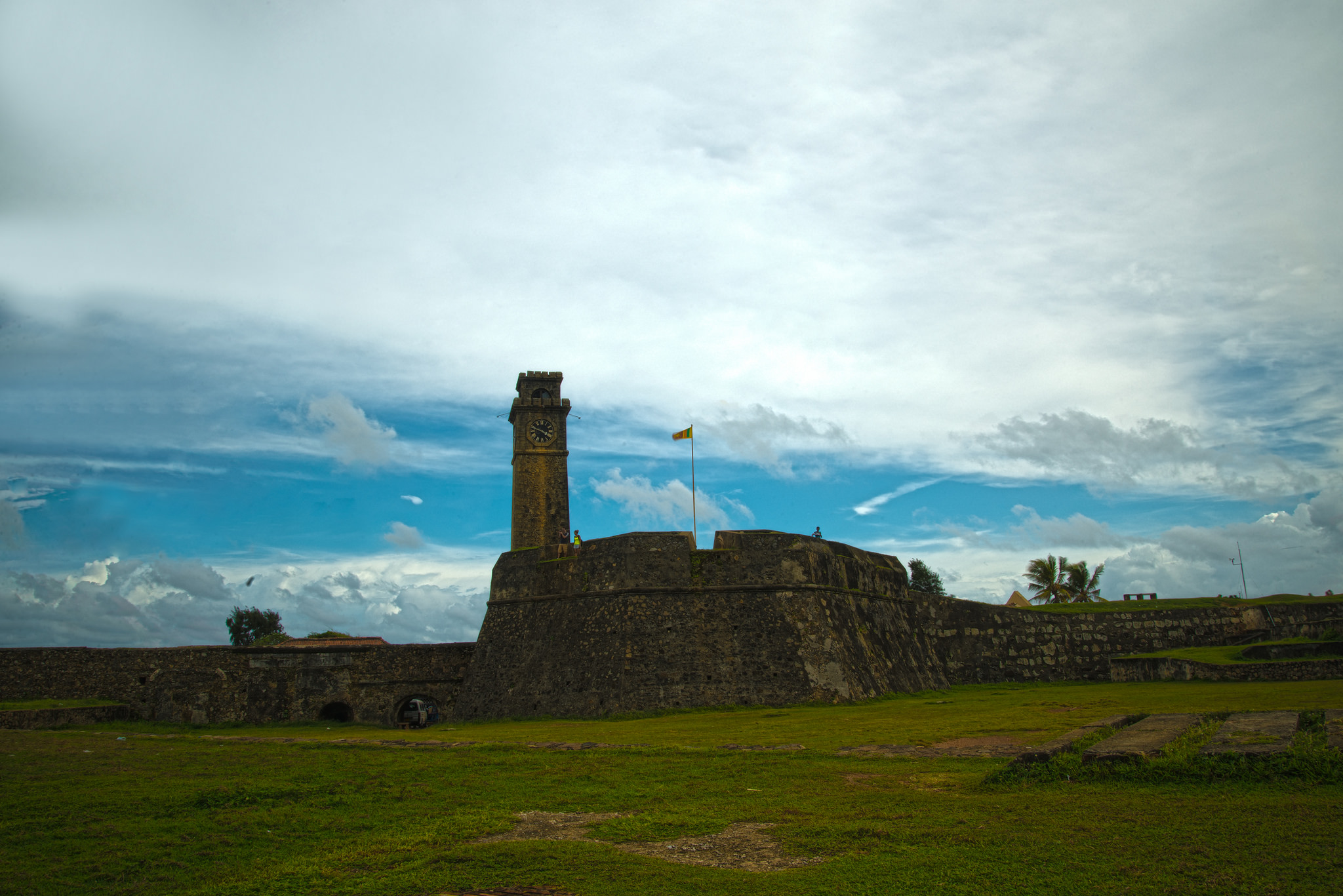The Dutch Fort in Galle is a perfect example of marvelous works of a departed era. The Portuguese arrived in Sri Lanka in the year 1505, and in 1588, they settled in Galle and built a small fort there. About a hundred years later, the Dutch came into the picture and took over the fort after a fierce battle. The fort was improvised, modernized and expanded by the Dutch. They built 14 bastions to separate the peninsula from the mainland and they devised a grid system inside the fort with straight and narrow streets, where houses were built in a unique architectural design. Although the British took over later, much of the Dutch construction can still be identified when you stroll around the Galle fort area.
The characteristics of Dutch architecture include gabled buildings, large verandahs, rounded pillars, massive doors, iron fittings and monogrammed fan lights. The entire Fort is about 36 hectares in size, stretching 700m from North to South. The original gate to the Fort is still intact and has an inscription of the Dutch VOC and a rooster crest. The outer arch of this gate has walls that are 1.3m thick, inscribed with the British coat of arms.
Strolling around the ramparts of the Dutch Fort, you can see a strong influence of Dutch architecture along with some stunning British designs. Since majority population is Muslim here, there are also some well designed Mosques giving an Arabic touch to the area. The lighthouse built by the British on one of the Dutch bastions is also a popular landmark here. Next to the lighthouse is the beautiful white Meera Jummah Mosque which attracts Muslims at all prayer times. In addition to that there is the National Maritime Museum and some ancient Churches that remind you of the era where enemies were locked up in Churches during the battles that were fought at sea. A Buddhist temple also exists on the site where there used to be a Portuguese Roman Catholic Church. With attractions from every religion, Galle certainly classifies as a melting pot of religions and cultures.
Walking is the best way to explore the Galle Dutch Fort. While doing so, peep into the houses on the narrow streets and someone is sure to invite you in to show you some antique ornaments or floor tiles that came from South India centuries ago. The multicultural environment here has both locals and foreigners because several foreigners have invested in houses in this area. Leyn Baan Street is the most popular area in the Galle Dutch Fort and here you will find children playing cricket on the center of the street while the side pathways have a collection of shops such as art and crafts, museums, wood carvings and so on.
Blue Lanka Tours recommends Galle as a must visit historic city when touring the Southern coast of Sri Lanka. With several hotels ranging from super luxury to standard budgets, you will never run out of options for accommodation in Galle. In fact it is a good place to begin your exploration of the south since Galle is very easily accessible by rail, and also by road through the Southern Expressway.

